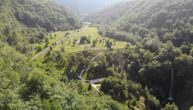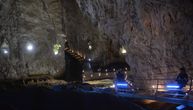Unjustly overlooked mountain in eastern Serbia that hides natural wealth and pristine clean water
This is the area where the well known Resava Cave (Serbian: Resavska Pecina) is also located
Although it is considered to be the largest among the karst mountains in Serbia, it still seems that Mt. Beljanica has been unfairly neglected. The width of this mountain is on average about 12 kilometers, while it stretches for about 25 km.
The highest mountain peak is located at an altitude of 1,139 meters.
Zagubica Spring
In the southern part of Zagubica, about a kilometer away from its center, is River Mlava's spring, also known as Zagubica Spring (Serbian: Zagubicko Vrelo). It is located at the foot of Mt. Beljanica.
The color that you will see if you visit Zagubica Spring will surely leave you breathless. The water is transparent up to the depth of 10 meters, while the average temperature is between 9 and 11 degrees centigrade.
Due to the fact that water comes to the surface of the spring very gently, it rarely gets muddy, so it is not surprising that its transparency is between 4 and 10 meters.
Waters abundance on Beljanica
Although there are many underground watercourses, Beljanica is a mountain that boasts numerous surface water flows.
There are a lot of sinking streams here. And precisely because of the entire landscape, the waters on this mountain are considered extremely clean. It's even possible to drink directly from a river or a stream in certain areas.
In addition to other sights, Resava Cave is also located in the area of Mt. Beljanica, but also numerous other caves that are not particularly well researched. One of them is called Velika Atula, which is found in a limestone ridge of this mountain and is about 560 meters long. For this reason, this cave is considered the largest in the area.
We should also mention the so-called Vlach Cave (Vlaska), as well as Pioneer (Pionirska) Cave, and one called Ivkov Ponor, along with many others, which Beljanica abounds in.
It's also of interest to note that the largest cave in the area of Beljanica, Velika Atula, has not yet been fully explored. However, in the part that experts have explored, a special species of centipede has been discovered, which has no pigment and is still considered an unknown species.
Otherwise, it is assumed that this mountain's name, Beljanica, was derived from the Serbian word "belo," meaning, "white" - because of the whiteness which characterizes its peak.
And in addition to all the mentioned attractions, Beljanica can also boast the waterfall Lisine or Veliki Buk, as well as a small river called Vrelo, or Godina, (Serbian for, "year") - because it is exactly 365 meters long -on which this waterfall is located.
(Aleksandra Blazevic/Telegraf.rs)

